Chapter 3 Industry Context





3.1 Maria Elena’s Story
Thirteen-year-old Maria Elena lived in a poverty-stricken Mexican village. Finding food and shelter was a full-time pursuit for the child and the rest of her large family. The few jobs available paid less than one dollar per hour. Even with the entire family employed, survival was a daily struggle. A family acquaintance told Maria that jobs in the United States were plentiful and she could make ten times as much money waiting tables in the United States than she could in the small village. Maria decided to make the sacrifice — she would travel across the border and find a job that would enable her to send much-needed money back home to her family.
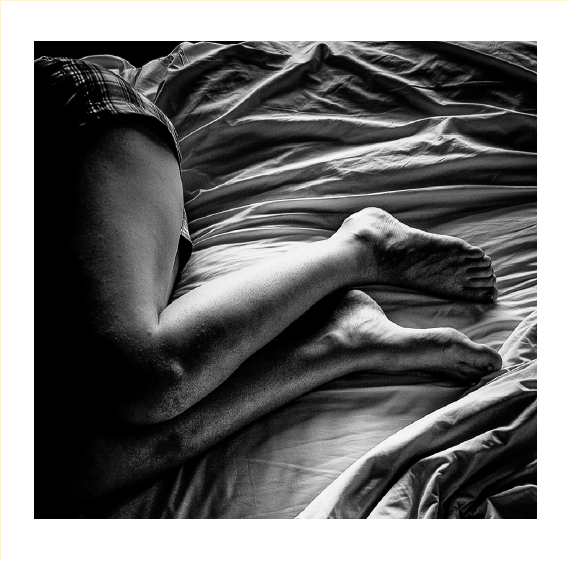
Maria and several other girls became illegal aliens when their “guides” drove them across the border. They were given directions to a Florida address where they were promised work as waitresses awaited them. Continually in fear of capture, the young girls traveled four days and nights on foot through the Texas desert; then crossed eastward toward Florida. When the girls finally arrived at their destination, they were physically and emotionally exhausted. Instead of the restaurant they expected, they found their new place of employment was a dilapidated mobile home in a rundown trailer park. Instead of being hired as waitresses, they were informed their new occupation would be prostitution.
Maria Elena was horrified and refused to cooperate. The child was then gang-raped and locked in the trailer without food or water until she agreed to do as she was told. In order to survive, Maria gave in. From that day, she lived under 24-hour watch. She was never alone and never without a reminder of the fate she would suffer if she rebelled. She was forced to have sex with up to 30 men a day. When Maria got pregnant, she was forced to have an abortion. She was sent back to work the very next day.
Maria Elena finally made her escape only to be arrested along with her traffickers. In the attempt to find a better life, Maria went from poverty, to slavery, to imprisonment, and ended up living as a broken, poverty-stricken, young woman, filled with shame, fear and regret. a & 1
This young girl’s experience is typical; however, in many sex trafficking cases, traffickers do not force their victims to end a pregnancy. Rather, they use the victim’s baby as a means of subduing her — threatening the child assures the compliance of the mother.
a Based on reported in “Trafficking in Persons Report 2012: Victims’ Stories.” U.S. Department of State. U.S. Department of State, 2012. Web. 05 Feb. 2013.

3.2 Children in Trafficking
MYTH: Only a small percentage of boys and girls are forced into prostitution.
FACT: Though only a small percentage of total sex trafficking victims, it is still estimated that 2 million boys and girls are exploited by the commercial sex trade industry annually. 20
• Recent reports from federal police in India estimate at least 1.2 million children are currently prostituted in India alone. 21
- If India states that it has 1.2 million children in prostitution, how many more children are actually being prostituted worldwide?
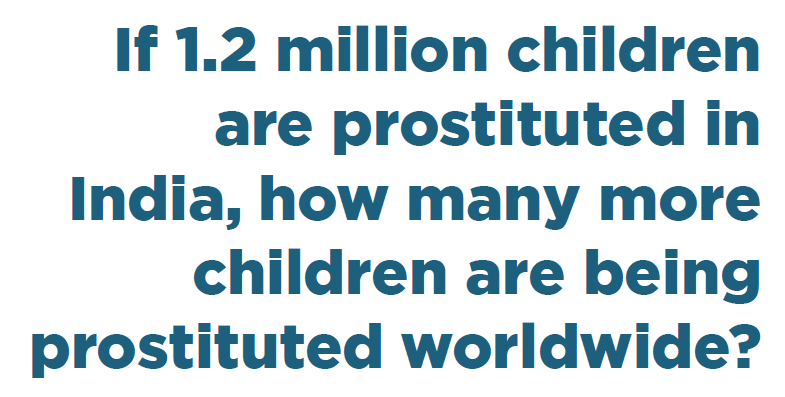

• In some countries, the average age of forced entry into prostitution can be as low as 12 years of age. This average age is decreasing as men’s fear of contracting STDs and HIV rises. 22
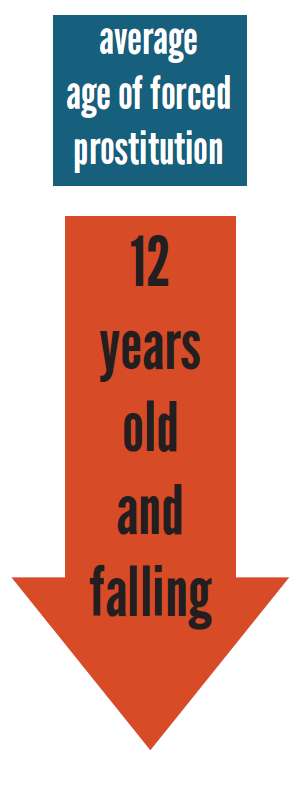
• In developed countries such as England and the United States, the average age of forced entry into the sex industry is as young as 13 years of age. 23 This means for every 17-year-old child who is forced into prostitution, a 9-year-old is also enslaved.
One of the most heartbreaking statistics of human trafficking regards the innocent children who are prostituted worldwide, with over 1 million children in India being prostituted. Often, traffickers use the funds they “earn” from a prostituted adult woman to subsidize the costs of children they supply to select patrons. Thus, as the average age of entry can be as young as 12 years old, when a man pays for a prostituted adult, he is often subsidizing the trafficker’s cost for the prostitution of a child. 10
Although many cases of sex trafficking involve the transport of human beings from one location to another, sex trafficking “does not require movement. People may be considered trafficking victims regardless of whether they were born into a state of servitude, were transported to the exploitative situation, previously consented to work for a trafficker, or participated in a crime as a direct result of being trafficked.” 11

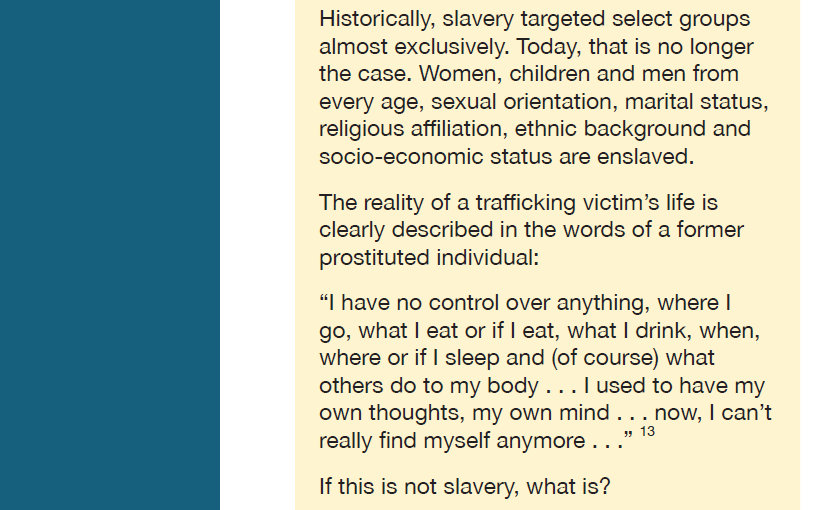

“I have no control over anything, where I go, what I eat or if I eat, what I drink, when, where or if I sleep and (of course) what others do to my body . . . I used to have my own thoughts, my own mind . . . now, I can’t really find myself anymore . . .”


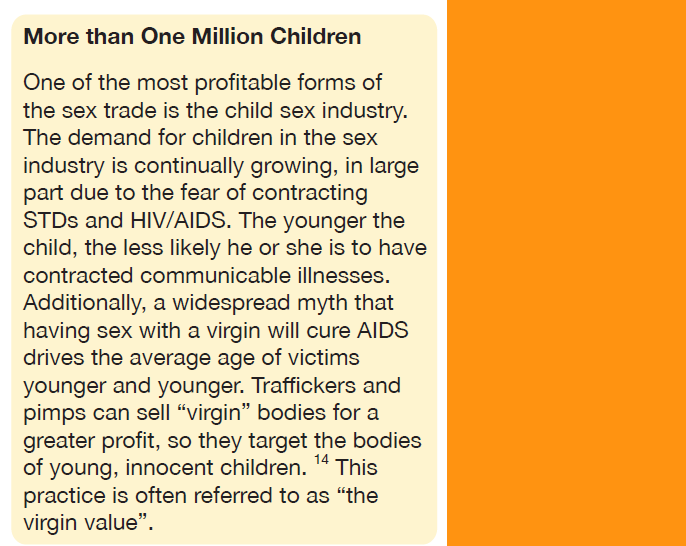

3.3 Profits in Trafficking Industry
Though the stories differ from situation to situation, one thing remains the same: unsuspecting people who seek a different life end up being enslaved. Their autonomy is torn from their hands and sold into the hands of another. Additionally, as trafficking victims’ bodies can be sold multiple times, sex trafficking is far more lucrative than any other crime. The demand to rent the bodies of the enslaved creates a constant source of income for contemporary slave traders of the world.
Yes, reading the words “rent the bodies of the enslaved” is a bit jarring. But this is the business model.
A person who rents property is purchasing the rights to that property for a specified length of time. If the words “rental” and “property” seem inappropriate when speaking about the fate of a human being, we agree. But it is a helpful lens through which to look at the realities of trafficking.
MYTH: Only a small percentage of human trafficking victims are sold into the sex industry.
FACT: Most human trafficking victims are enslaved in the commercial sex trade industry.
• The U.S. State Department has estimated that 80 percent of trafficked victims worldwide are female, and our best estimation is that approximately 18.9 million (NOTE: UPDATE #) of all trafficking victims are forced into and held in the sex industry. 11
• One key study showed that approximately 82 percent of all human trafficking in the United States results in the sexual prostitution of the victims. 12

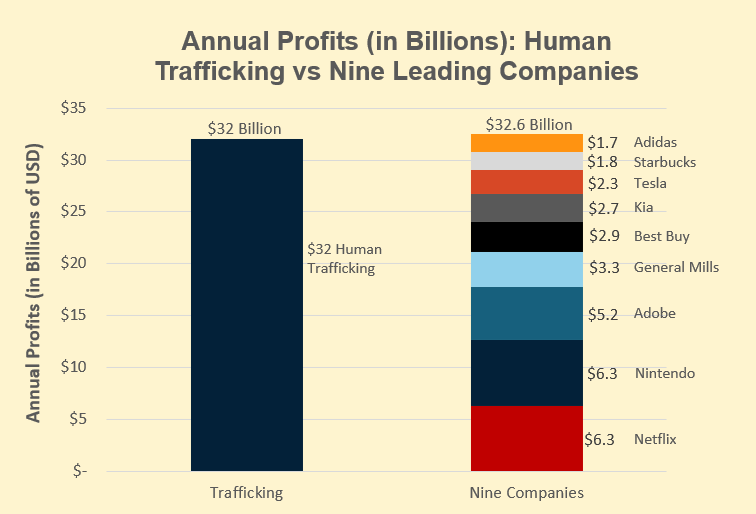

The Personal Horrors of Human Trafficking
Women and children who are victimized by sex trafficking are trapped in a hell from which there seems no escape. Their owners will stop at nothing to ensure their obedience. Most are threatened with violence to themselves or their families. 17 Many are forced to submit to the administration of drugs and become addicted. Since prostitution is criminalized in many areas of the world, prostituted individuals are then arrested repeatedly and accumulate lengthy criminal records.
For prostituted individuals, threats, addiction, poverty, and a lack of alternatives limit the vision for a different life. Many factors, including drugs, emotional abuse, isolation and self-blame, block a victim’s path to escape. 18 They feel as though there is no way out. And sadly, to escape this nightmare, up to 75 percent have attempted suicide. Hospitals inform that prostituted women make up 15 percent of all completed suicides. 19

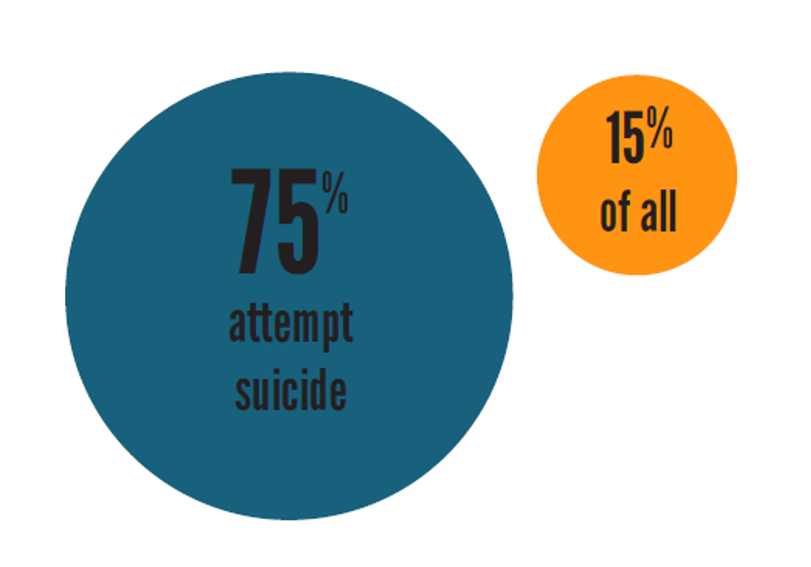

For the children who are exploited, escape seems even less likely. As with enslaved women, fear, and drug dependence thwart any thought of escape. Add to this lethal mixture the fact that these children are too young to adequately care or provide for themselves if they were somehow able to escape, and the hopelessness of their fate grows exponentially.
As you read these words, an enslaved child is being sexually abused to profit a contemporary slave trader. Before you finish reading this sentence, hundreds of women will be forcibly prostituted to satisfy the demand of for hired sex.
Even one person forced into the sex trade is too many.
The demand for hired sex is the reason women and children are trapped in this perpetual cycle of prostitution.

“Even one person forced into the sex trade is too many.”

3.4 Trafficking and Pornography
Does / how does pornography play into this?
When people watch hard-core, pornographic vidoes, it usually does not occur to them that they could be watching slavery in action. When people frequent internet sites featuring sexually explicit photos, it usually does not occur to them that the “model” might be a modern-day slave. When people engage an escort for the evening, they usually do not consider that - based on the statistics covered - it is more likely than not that the woman is enslaved and her “work” lines the pockets of her pimp. These people may well be paying to use a young girl like Maria Elena — a beaten, enslaved and currently (or at one time in the past) a prostituted child and now is trapped.
It’s easy to stand by and point fingers of accusation only at the traffickers who enslave women and children.
However, deep and true change will occur when we realize how our actions and inactions can and do contribute to this problem.
Without question, this is a complex web. A web most cultures do not inform us of the true, sad realities faced by so many and how simple actions can foster the enslavement of so many moms, sisters, daugthers, brothers, sons, etc. But imagine how simple changes in behavior can, are, and will have a significant positive impact on changing the landscape of sex trafficking.

“Simple changes have massive effects.”

That is, simply not visiting a venue or clicking even on a free site can help free those currently enslaved and shrink a market so others will not be enslaved. Simple changes have massive effects.



Think of 1 to 3 ways you see the culture around you causing or encouraging sex trafficking?
What does a culture that would not foster sex trafficking look like?
How can you help to shrink the sex trafficking market?
